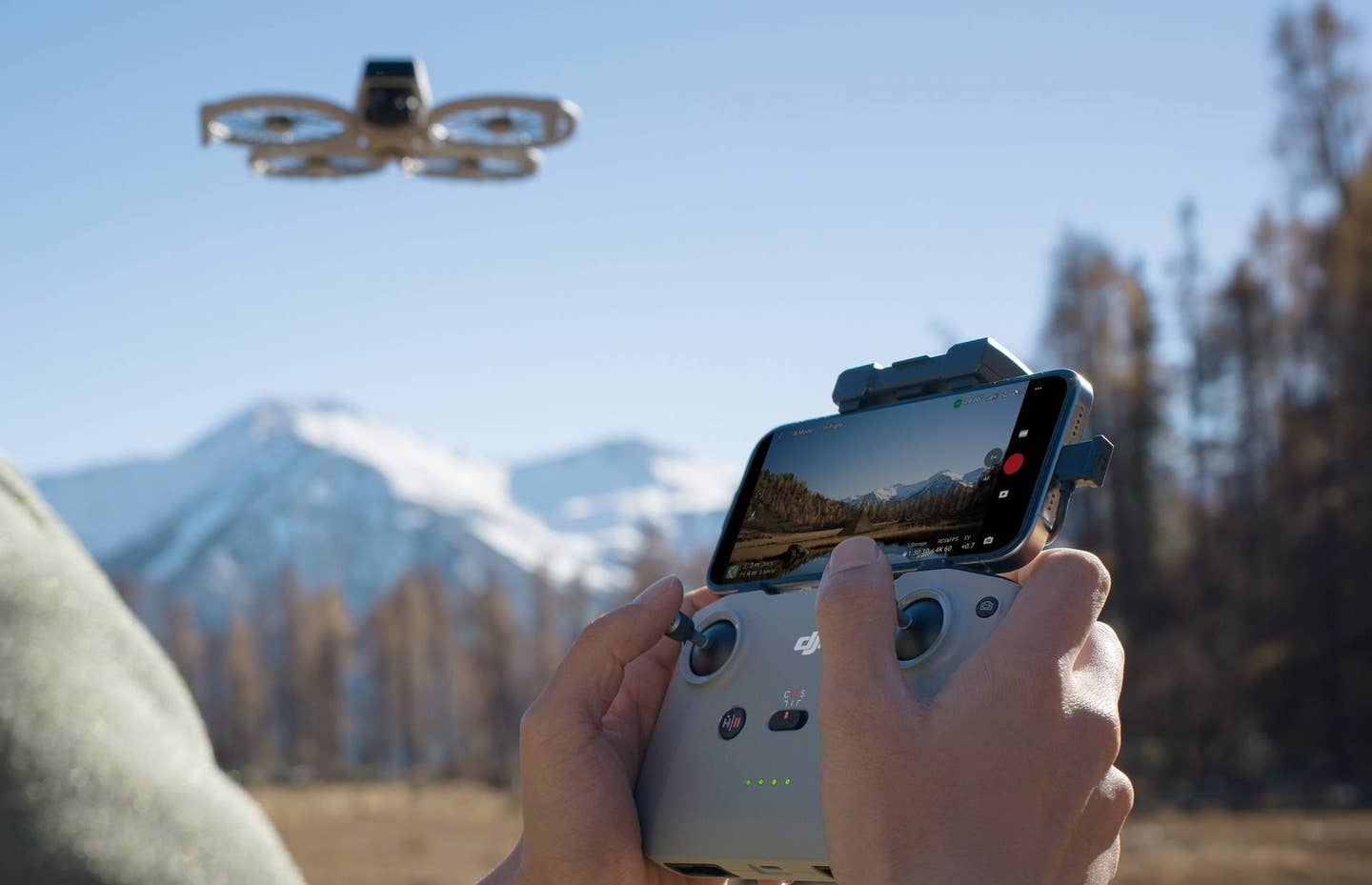
If you’re looking to sharpen your flying skills, cockpit organizational tools like those offered by MyGoFlight, for instance, can help. [Courtesy MyGoFlight]
Returning to the flight deck following a long hiatus can be tricky. To some extent, and particularly for those with significant past experience, the basic motions of piloting could possibly be likened to riding a bike.
Perhaps the “feel” of flying will come back quickly for you. Even so, to think that all is well simply because the basic mechanics feel natural after a few laps in the pattern is to fall into a dangerous trap.
Flying in ideal conditions with a beautifully operating aircraft is one thing. Dealing with an in-flight emergency is something else entirely.
- READ MORE: VFR Radio Skills for Rusty Pilots
It is very likely that your aviation knowledge retention is what has suffered the most during your time away. This understanding certainly includes your familiarity with emergency procedures, best practices, and aircraft-specific memory items.
Before venturing back into the skies sans instructor, make sure you know what to do in every situation, including those you hope will never happen.
Understanding Emergency Procedures for Pilots
Emergency procedures help keep things manageable and relatively simple for the pilot who finds himself in a dangerous and unexpected situation in flight—ranging from engine failures to onboard fires, communication loss to cabin depressurization.
Part of the battle against in-flight emergencies is to utilize high-quality equipment, as well as backups of critical items. It is a good idea to carry a hand-held radio, for instance, or even additional oxygen delivery and monitoring equipment for high altitude flight.
Still, redundancy cannot solve or eliminate every problem. Having— and being deeply familiar with—a clear set of emergency procedures greatly reduces risk and helps pilots manage workload in a stressful and likely task-saturated situation. Quickly recognizing an emergency and being able to immediately and smoothly apply the correct procedures can—and often have been—the difference between life and death.
Yes, your plane should have an emergency checklist in the cockpit, and yes, a good deal of the information you might need should be on it. But as the saying goes, “It’s a checklist, not a do-list.”
- READ MORE: IFR Chart Review for Rusty Pilots
The pilot who knows their checklist and is comfortable with its associated procedures can react swiftly. They might then be able to enjoy the luxury of reviewing the checklist to ensure everything that could be done actually was.
The pilot who must read off from the checklist from the get-go will start the battle against time on the back foot, is likely to miss crucial items in a moment of panic, and will waste precious seconds when each one counts like never before.
Refresher training allows rusty pilots to reengage with these procedures, reinforcing critical skills. This will include studying your aircraft’s POH and committing an emergency checklist to memory.
But it is also wise to utilize additional training materials and courses. Sporty’s Pilot Shop, for instance, offers a resource package designed with rusty pilots in mind that includes tools like its flight and VFR communications review courses, along with physical copies of the Pilot’s Handbook of Aeronautical Knowledge and a current Federal Aviation Regulations/Aeronautical Information Manual (FAR/AIM).
Using resources like these helps give you more exposure to real-world scenarios and to practical tips and tricks for committing procedures to memory and using them effectively in practice.
As PIC, responsibility for the safety of your aircraft and, ultimately, of yourself and your passengers rests squarely on your shoulders.
In an emergency, the PIC must maintain situational awareness, make swift decisions, and prioritize tasks effectively. Calm leadership and a firm grasp of the situation and of the path forward during a crisis is paramount and your responsibility if and when you return to the cockpit.
This will only be possible if you know your aircraft, emergency procedures, and have taken the time to stay proficient with them.
The ABCDE Method in Aviation Emergencies
A practical, simple, and widely accepted approach to handling engine-related, in-flight emergencies is the ABC checklist. Perhaps you remember this from your past flying experience.
Another, somewhat more fleshed out version to commit to memory is the ABCDE checklist:
- (A) Airspeed: As they say, “Aviate, Navigate, Communicate.” Your first first priority is to fly the airplane. Assuming you’ve lost an engine, or had to shut it down for whatever reason, you should already know your plane’s best glide speed without needing to reference your checklist. Pitch for airspeed accordingly to maximize the time available for decision making.
- (B) Best place to land: After pitching for best glide, now is the time to select your emergency landing site. Look for somewhere flat. Ideally, the ground will be clear of long grass or crops, allowing you to see and compensate for major obstructions or ditches, for example. Keep your eyes open for telephone poles and suspended wires. If landing on a road, look out for traffic lights or highway signs, and always attempt to land with the flow of traffic to avoid a head-on collision.
- (C) Checklist: Run through your emergency checklist by memory first. You should have all items committed to memory, so your physical checklist will serve as a tool to review for any missing steps on the back end. If you have a passenger or another pilot with you, hand them the checklist and have them read through the relevant items. This will keep your hands free and your head up, focused on the task before you.
- (D) Declare: Once you are as in control as you can be and have run through your immediate checklist items, notify ATC of your situation. If not currently in contact with ATC, tune to 121.5. Your call will begin with “Mayday, Mayday, Mayday” followed by your call sign and approximate location. Next, describe your situation and intentions. Squawk 7700 on your transponder to indicate an emergency.
- (E) Execute: Continue taking appropriate actions relevant to your specific emergency and in accordance with your established emergency procedures and checklist.
Applying the ABCDE method in simulated scenarios
Take the time to simulate emergency scenarios, both in the air with an instructor, but also at home on the ground.
Again, courses focused on building or rebuilding pilot proficiency can be helpful to you as you simulate various situations on your own at home. You might even consider practicing these scenarios using a computer-based flight simulator to help make things a little more realistic.
Emergency procedures should be practiced to the point that reacting is as simple as initiating and executing a well-practiced flow. Frequent simulation helps build muscle memory and ensures that when a real emergency arises, the response is quick and automatic.
The ABCDE method streamlines the decision-making process and ensures that critical actions are taken in order of priority. It reduces stress and confusion in emergencies, enabling pilots to handle the situation with clarity.
By focusing on airspeed, landing options, checklists, communication, and execution, pilots can quickly address vital areas of emergency response, greatly enhancing safety outcomes.
Key Piloting Priorities During an Emergency
Recognizing and assessing the situation
Before any checklist can be of service to you, you need to actually recognize that an emergency exists.
Simple as that sounds, there are usually small signs ahead of a full-scale emergency that pilots miss or fail to deal with properly. Using a consistent and intentional scan might help you catch a higher-than-normal temperature reading or a lower-than-normal oil pressure indication.
Likewise, proficiency with your aircraft and diligent situational awareness may help you catch a suspiciously flickering light or flag an unusual sound or smell for further investigation. If you can recognize symptoms of a potential emergency early, you might have the time to evaluate the risk those symptoms pose and perhaps get safely on the ground before the situation can escalate any further.
Thus, pilots must remain alert to changing conditions and proficient enough with their aircraft’s systems and indications to recognize when a problem is forming.
Decision-making process
Once an emergency is identified, the decision-making process begins. The pilot’s ability to prioritize tasks plays a crucial role.
Effective decision making requires staying calm, focusing on the most critical issues, and evaluating all options. Training and experience sharpen this skill, but even experienced pilots who have been away from the cockpit for a while need refresher exercises to rebuild their proficiency in making high-stakes decisions quickly.
Execution of emergency procedures
With the proper forethought, training, and practice, the PIC should be able to follow through with the proper emergency procedures with speed, calm, and confidence.
It is also important that your cockpit and the resources you have at your fingertips are well organized and easily accessible. Make sure everything you might need in flight, including for emergency procedures, is in a consistent and predictable place. Some might find it helpful to utilize cockpit organizational tools like those offered by MyGoFlight, for instance.
Pairing preparedness and organization with swift execution in an emergency requires you to have a deep familiarity with your aircraft’s emergency procedures but also with its systems and operating handbook and limitations.
If one set of procedures is not fixing the problem, the well-prepared pilot might be able to rule out one cause and begin troubleshooting another. Without a thorough background knowledge of the aircraft itself, memorizing checklists alone might not be enough if the root cause of the problem is misidentified.
That background knowledge will enable the pilot to take each action deliberately while remaining ready to adapt to what could be an evolving situation.
Essential Emergency Phrases in Aviation
Pilots use specific, universal radiotelephone phrases to communicate the severity of a situation:
- “Mayday” is the most commonly used and is spoken to communicate an aircraft in distress. It should be repeated three times, followed by the aircraft’s call sign, its approximate location, and a concise description of the problem.
- “Pan-Pan” is less commonly used but can be utilized to declare an urgent situation that is not immediately life threatening but still requires priority assistance. As with “Mayday,” it should be repeated three times, followed by the aircraft’s call sign, its approximate location, and a concise description of what is going on and of what assistance is required.
AIM 6-3-1 provides further information about how and when to use these calls appropriately. Even so, while such calls should never be abused, if in doubt, it is better to go ahead and declare an emergency than to second guess yourself and fail to receive potentially lifesaving help.
Communicating effectively in emergency situations
Clear communication is vital. Practice actually making these sorts of radio calls when simulating emergency checklist flows so the words you need to say will come readily and naturally should you ever need to say them in the real world.
In high-stress situations, miscommunications can have disastrous outcomes. Communicating during an emergency will be drastically more difficult if you are not confident communicating during normal operation.
If your radio communications are lacking after time away from the cockpit, spend time brushing up on them. Again, resources like Sporty’s course offerings on emergency procedures or VFR radio communication provide excellent training to help you get your radio communication skills back up to speed.
Maintain communication with ATC, keeping it updated on your progress and any changes to your plan. A calm, composed tone can also help to reduce stress for everyone involved.
Importance of clear communication among crew members
Internal communication with your crew, if you have one, is just as important as communication with ATC.
Using good crew resource management (CRM) helps make sure that everyone is on the same page about who needs to do what and how each member can work together efficiently. Even if you are not flying with another pilot, your passengers may be able to help with simple tasks like reading off checklist items or nav aid frequencies, or even keeping the wings level while you devote yourself to a more pressing emergency task.
Utilize whatever human resources you can in an emergency to avoid task saturation.
Enhancing Pilot Readiness and Safety
Take the time to retrain for emergency preparedness, but don’t stop there.
Make training for emergencies part of your normal routine as you get back into the skies and beyond. Consider utilizing periodic simulation exercises, both in simulators and in real flight conditions. These exercises help keep procedures fresh in your mind, ensuring that even under pressure, the correct actions are taken instinctively.
After each training session or simulation, pilots should receive feedback. Identifying areas of improvement, analyzing mistakes, and understanding what went well are all part of continuous improvement. This process ensures that each training session enhances your readiness for future flights, improving both skills and confidence.
Practice breeds confidence. The more time spent reviewing emergency procedures, the more prepared you’ll feel if an actual emergency arises. Pilots who regularly engage in emergency drills are more likely to handle real-world scenarios with a calm, measured approach.
Building confidence through practice not only enhances personal safety but also reassures passengers and crew that the flight is in capable hands.
Conclusion and Further Learning Resources
Emergencies in aviation are unpredictable, but they can be managed with proper training and preparation.
The ABCDE method provides a helpful framework and memory aid for addressing emergencies, and clear communication ensures that the crew, other pilots, and ATC are aware of the situation and actions being taken. Regular practice, simulation, and staying current with emergency procedures are essential for all pilots, especially those returning to flying after a break.
For pilots looking to further enhance their emergency preparedness, consider enrolling in advanced refresher courses such as those offered by the FAA or through private training organizations. Online resources, such as the FAA’s Pilot’s Handbook of Aeronautical Knowledge, as well as safety courses from the Aircraft Owners and Pilots Association (AOPA) and Air Safety Institute, provide additional reading and educational material to keep you sharp.
Being a safe and confident pilot demands a commitment to constant learning. Stay on top of your emergency procedures, utilize helpful training resources, and frequently revisit core skills.
By doing so, you’ll ensure that, no matter what challenges arise in flight, you’ll be ready to handle them with confidence and skill.
FAQ
What is the ABCDE emergency checklist?
The ABCDE emergency checklist is a memory aid to assist a pilot in the event of an emergency. “A” stands for airspeed, or best glide speed; “B” stands for best place to land; “C” stands for checklist; “D” stands for declare the emergency; “E” stands for execute.
What are the three piloting priorities during an emergency?
Pilots who encounter an emergency situation are encouraged to “Aviate, Navigate, Communicate.” Focus first and foremost on keeping the aircraft under control, then focus on getting the plane where it needs to go, and finally, talk to ATC and other pilots to let them know the situation and to seek help.
What are the emergency phrases for aviation?
The most common emergency phrase a pilot will use over the radio during a genuine emergency is “Mayday, Mayday, Mayday.” Although less widely recognized, in the event of an urgent situation that may be developing into an emergency without immediate action, the pilot can also use the phrase “Pan-Pan, Pan-Pan, Pan-Pan.”

Sign-up for newsletters & special offers!
Get the latest FLYING stories & special offers delivered directly to your inbox






